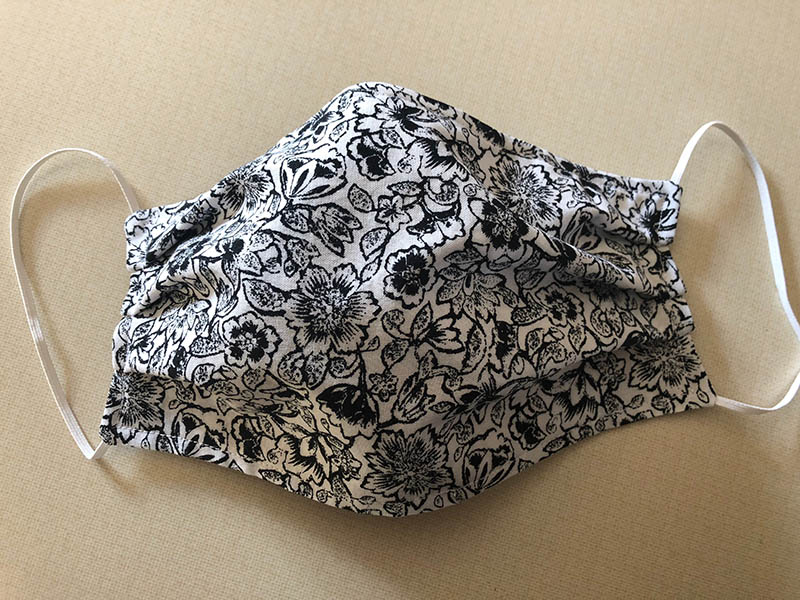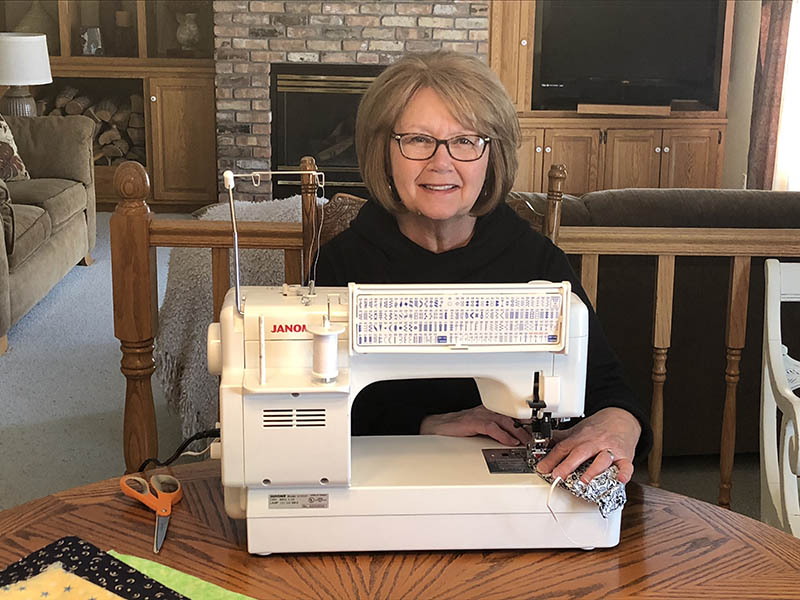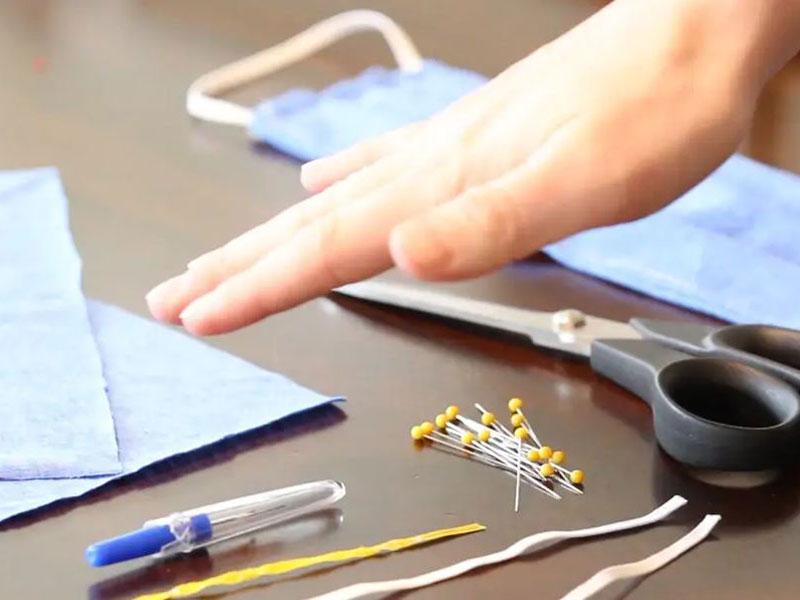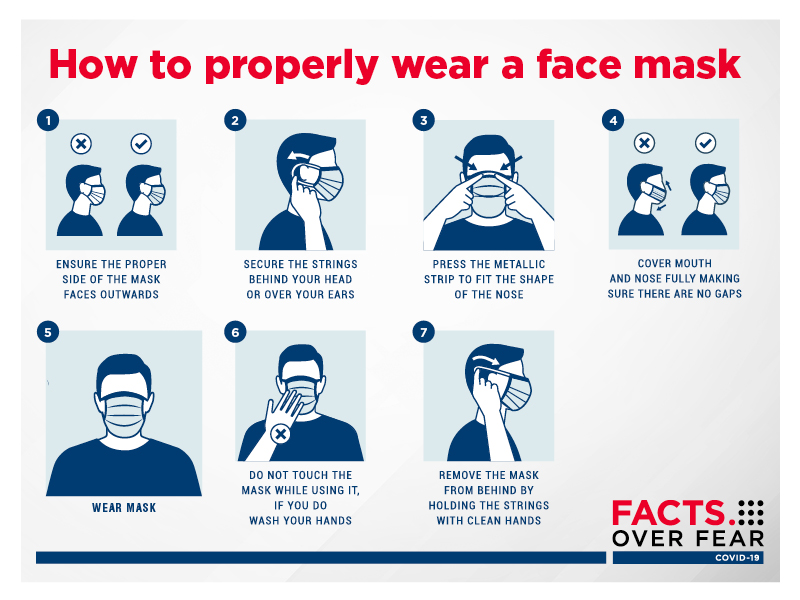For Sanford Health and Good Samaritan Society workers in clinical settings, surgical face masks are required at all times while providing care.
Outside of clinical settings, cloth masks may be used to help limit transmission of the coronavirus by people without symptoms. Workers caring for suspected or confirmed COVID-19 patients are still required to wear personal protective equipment (PPE).
Patients and visitors also must wear masks, with some exceptions for people who are fully vaccinated against COVID-19. See the latest safety policies at Sanford Health.
The Centers for Disease Control and Prevention also recently offered new recommendations for the general public to wear cloth face masks in public settings if you are not fully vaccinated against COVID-19. The CDC warns against placing masks on children younger than 2, or on anyone who has trouble breathing or cannot remove the mask without assistance.
Learn more: Latest CDC guidelines on wearing masks
The CDC has no-sew instructions for masks that the public can make and wear.
Watch Sanford Health videos:
How should masks be worn?
Here are some guidelines, particularly for health care workers, for using alternative face masks.
- Masks should be worn in proper position at all times (i.e., covering the nose and mouth, not hanging around the neck or resting on chin) and stored properly in between uses.
- Avoid touching or adjusting the face mask.
- Remove the mask without touching the eyes, nose or mouth. Grasp only the ties or earloops. Fold the mask so the outer surface is held inward and against itself (like a taco). Place the mask in a paper bag labeled with the person’s name. Don’t let the dirty outer surface of the mask touch the outer surface of the storage bag.
- Wash hands thoroughly after touching the face mask.
- The mask is dirty and must be changed when it’s saturated from condensation build-up from breathing, or after it gets contaminated.
- Keep dirty and clean face masks in separate, clearly labeled containers such as closed paper bags.
How should you clean a mask?
Wash dirty cloth masks daily in warm water with enzymatic detergent. Dry completely.
How can I make a mask?
Here are sewing instructions for making an adult face mask in standard and extra-large adult sizes.
For best results, prewash the fabric before you make the mask to avoid fabric shrinking.
What you will need:
- Cotton fabric: First cut 6” (width of fabric, or WOF), then sub-cut 9” or 10” depending on the size you are making. You will get enough to make 2 masks out of each WOF cut. If you have scraps of fabric, you can just cut to the measurements. Try to make sure the fabric design runs horizontally. For the adult size, you will need 2 pieces 9” x 6” each; for the extra-large size, you will need 2 pieces 10” x 6” each.

Photo courtesy of Sandy Maydole
- Rope elastic, or beading cord elastic will work; you may also use 1/8” flat elastic. Each mask needs 2 pieces of elastic. If you are using corded or round elastic, tie a knot at each end so it does not slip out of the seams. If you are using flat, no need to knot. You’ll need 2 pieces of 7” for standard mask, or 2 pieces of 9” for the extra-large mask.
- Thread
- Rotary cutter or fabric scissors
- Ruler
- Cutting mat (if available)
- Sewing machine
- Bread tie
Directions to follow:
- Take one of the pieces of fabric, and on the wrong side in the center of the very top of the long side, zigzag a bread tie. That way when you sew the two together, the bread tie will be in place.
- Start with right sides of fabric together.
- Starting at the center of the bottom edge, sew to the first corner and stop. Sew the elastic with the edge out into the corner. A few stitches forward and back will hold this. The elastic will be on the inside of the fabric pieces.
- Sew to the next corner, stop, and bring the other end of the same elastic to the corner and sew a few stitches forward and back.
- Now sew across the top of the mask to the next corner. Make sure the bread tie is between the seam and outside edge so it will stay in place. Again, put an elastic with the edge out.
- Sew to the next corner and sew in the other end of the same elastic.
- Sew across the bottom, leaving about 1.5” to 2” open. Stop, and cut the thread. Turn inside out. Now you will have 2 loops on the outside with the elastic. Pin 3 tucks on each side of the mask. Make sure the tucks are the same direction.
- Top stitch all the way around the mask to secure the tucks.
‘Thank you to all these heroes’

Photo courtesy of Sandy Maydole
Sandy Maydole of Hawley, Minnesota, is just one person of many who has reached out to Sanford Health, offering to make face masks. Maydole has two daughters working for Sanford Health in Fargo.
Hearing news reports about shortages of equipment for health care workers inspired Maydole, who is retired, to want to sew masks to help. She has been sewing masks for people in her community, but she plans to help Sanford Health as well.
“It gives me a good feeling that there’s something I can do,” she said. “It’s hard when you can’t help in any way.”
Maydole appreciates being able to do something supportive from the socially distanced comfort of her home.
“We are just very grateful to all of the health care workers who are on the front lines fighting this battle against the coronavirus. I just want to say thank you to all these heroes for the dedication and courage and sacrifices they make each and every day,” Maydole said. “I’m proud of my daughters for the choice they made to be nurses and for their dedication to helping others in all situations.”
This story was originally published April 8, 2020. It was updated June 10, 2021, with new CDC guidelines for wearing masks.
More stories
- Sanford reinforces “community” amid coronavirus pandemic
- Raven Industries makes protective gowns for Sanford Health
- Latest COVID-19 recommendations from Sanford Health providers
…
Posted In Bemidji, Community, COVID-19, Sioux Falls, Wellness


